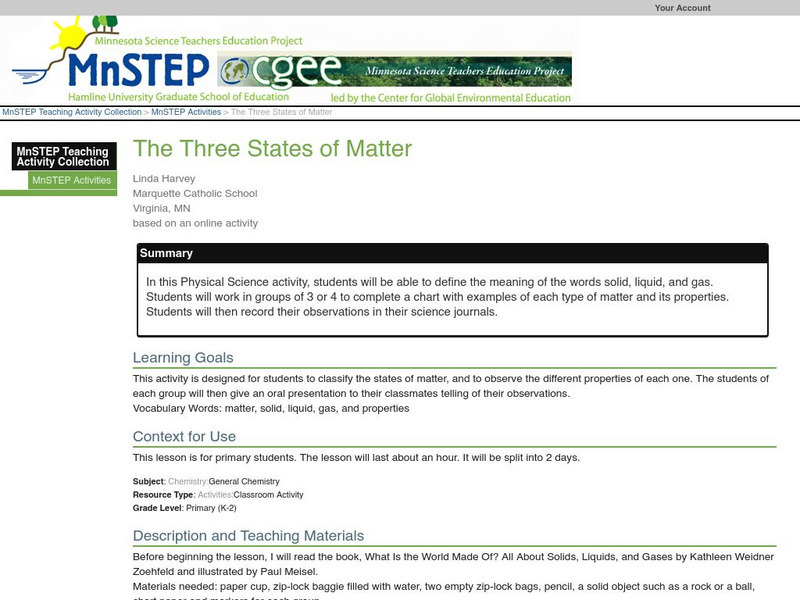Hi, what do you want to do?
Science Education Resource Center at Carleton College
Serc: The Three States of Matter
In this Physical Science exploration activity, students explore the meaning of the words solid, liquid, and gas. Student groups complete a chart with examples of each type of matter and its properties and then record their observations...





